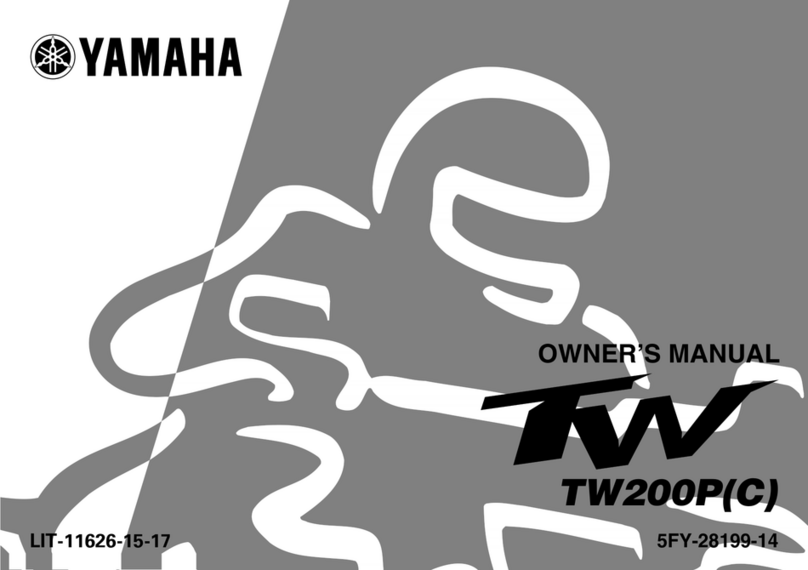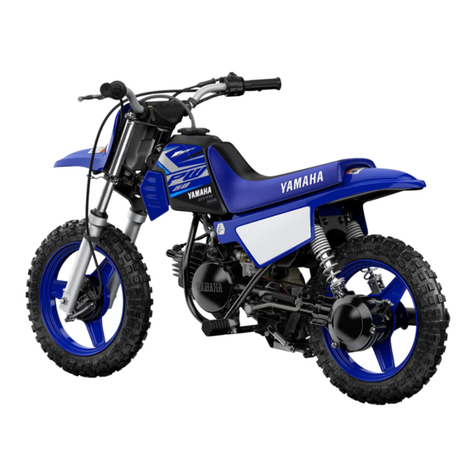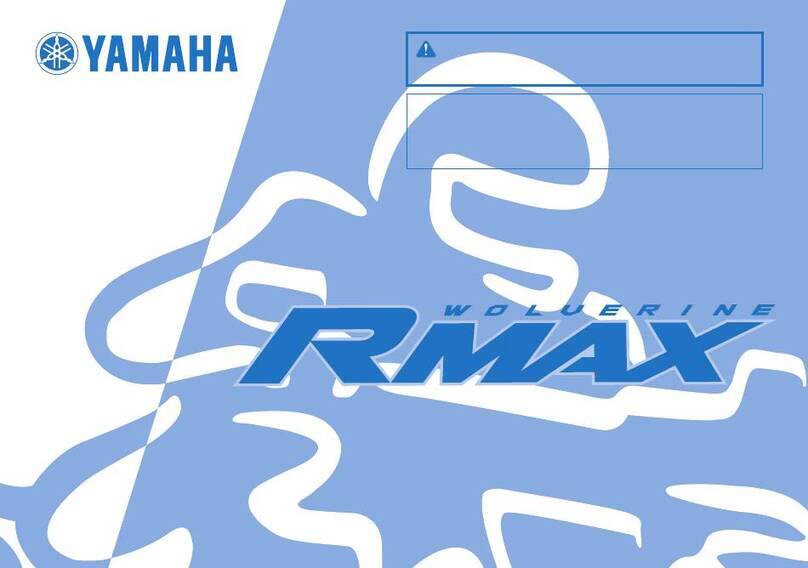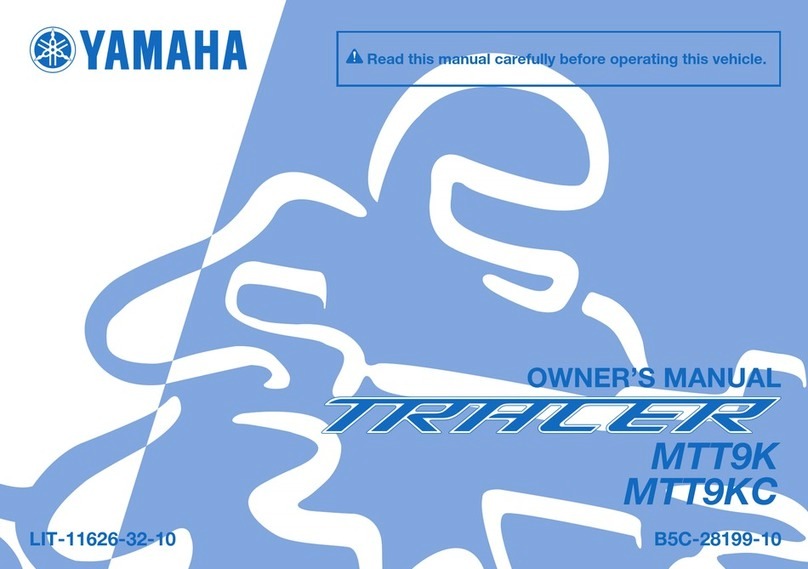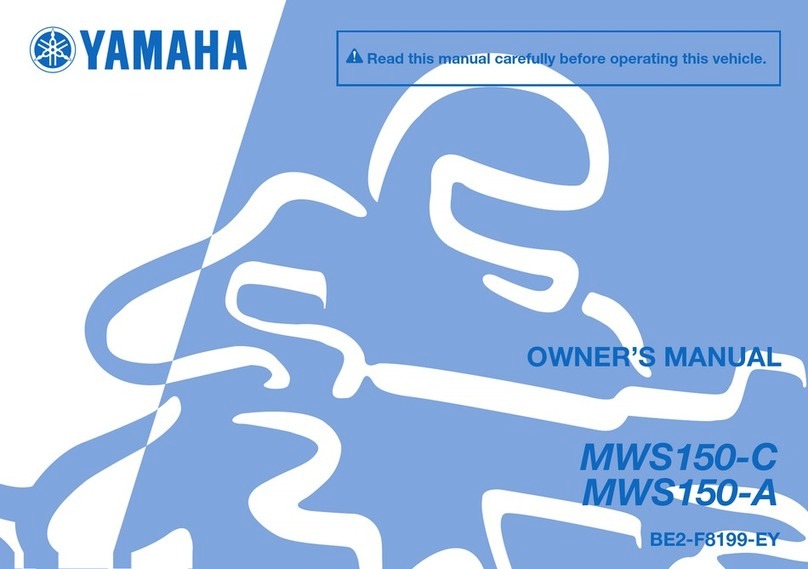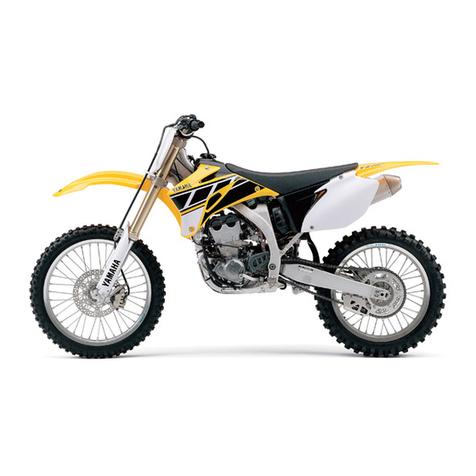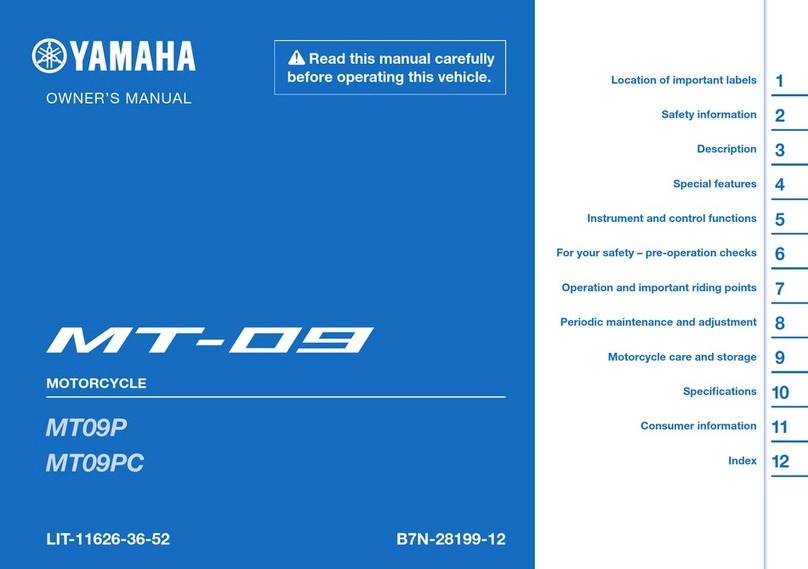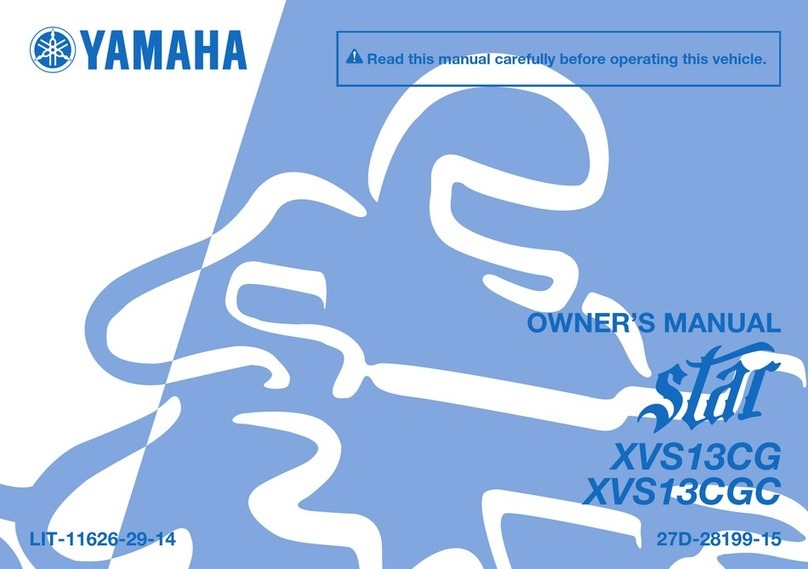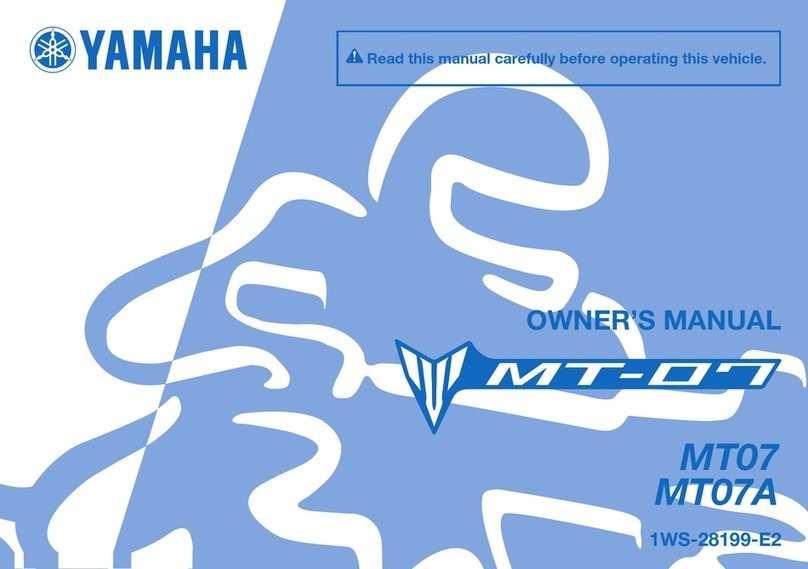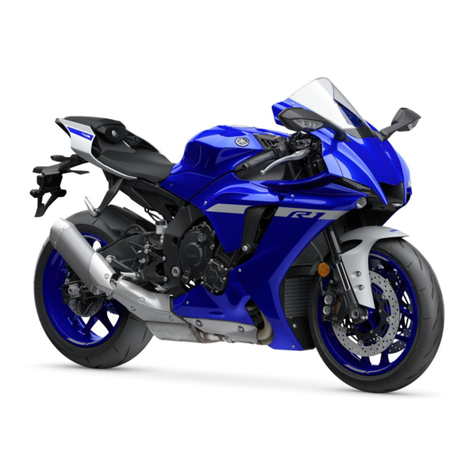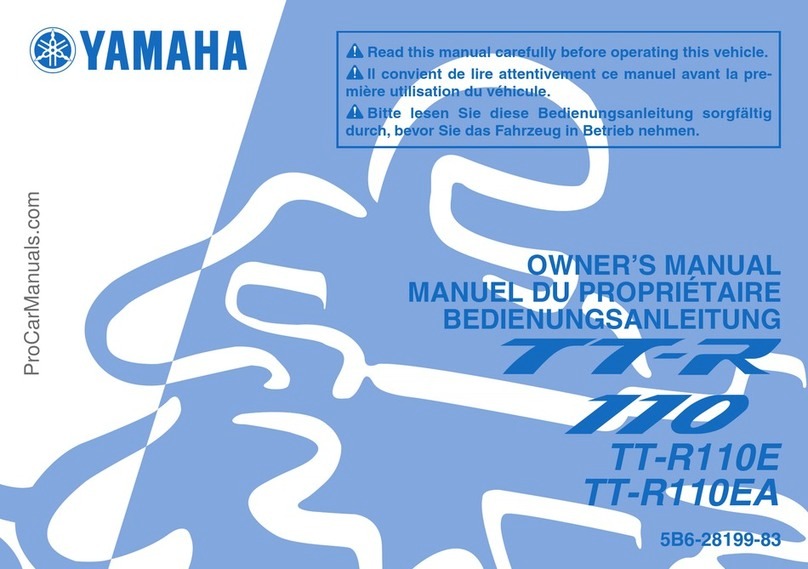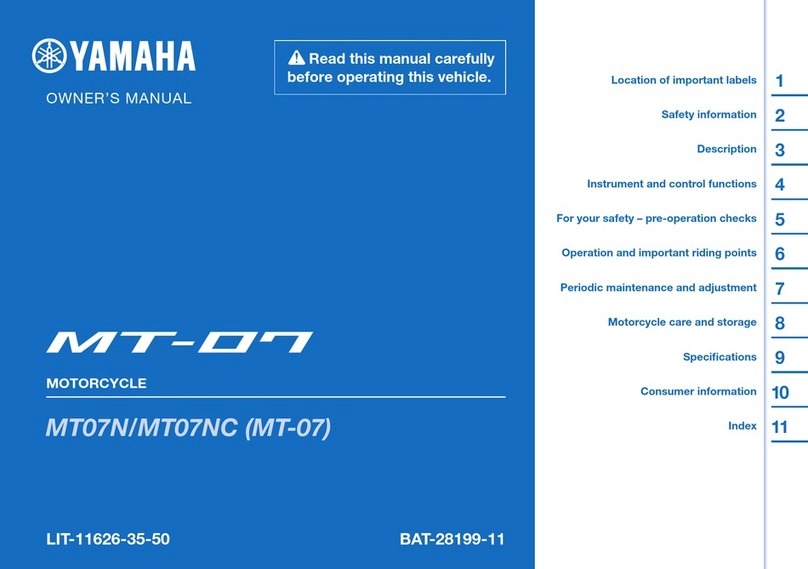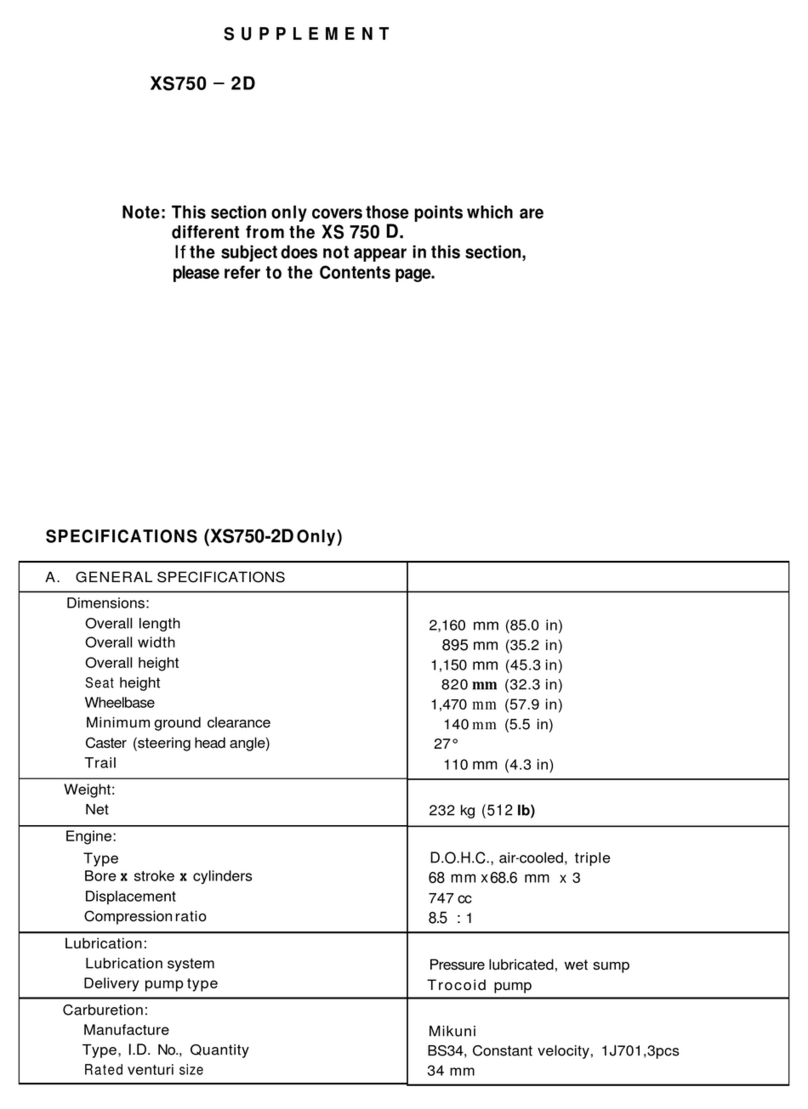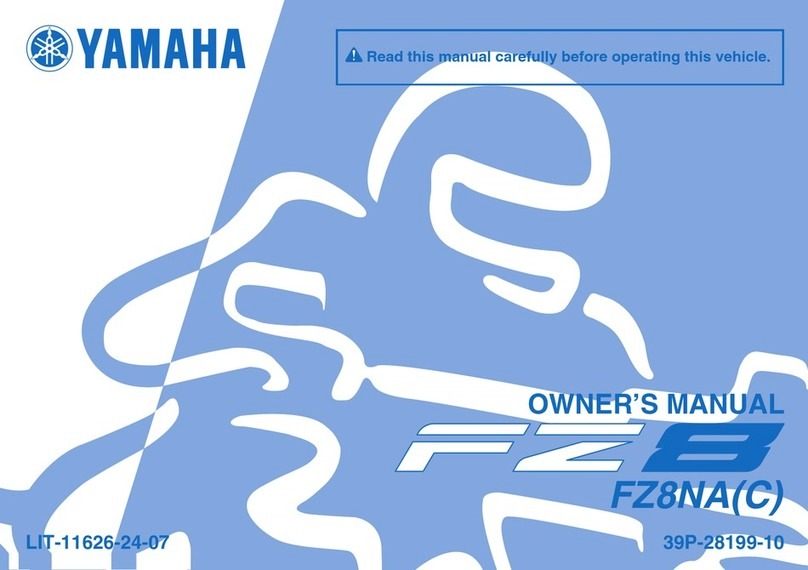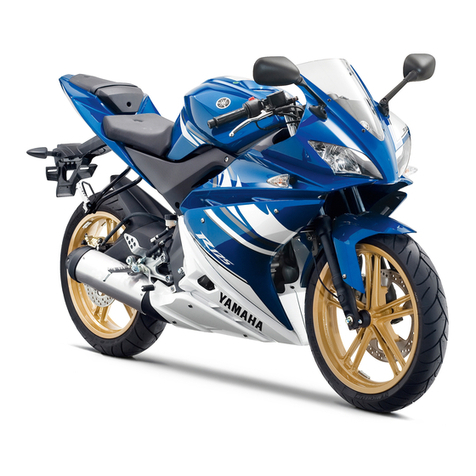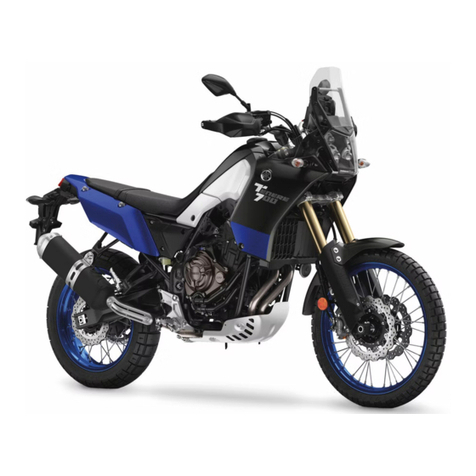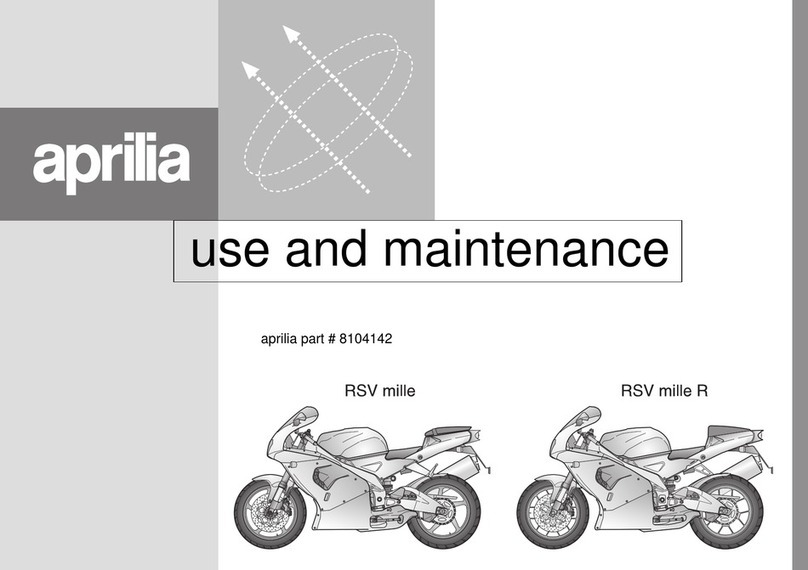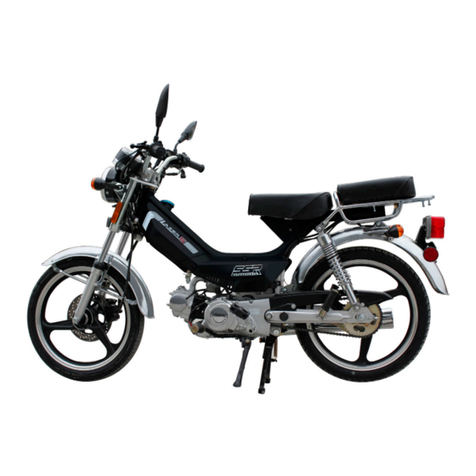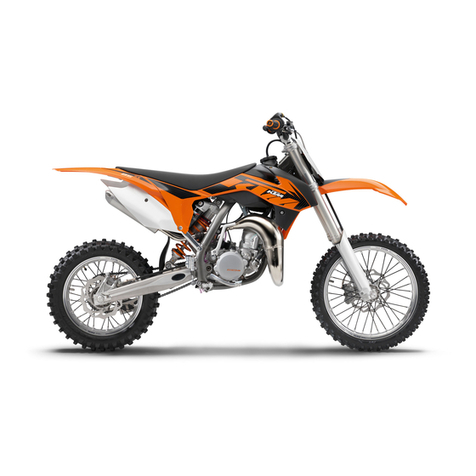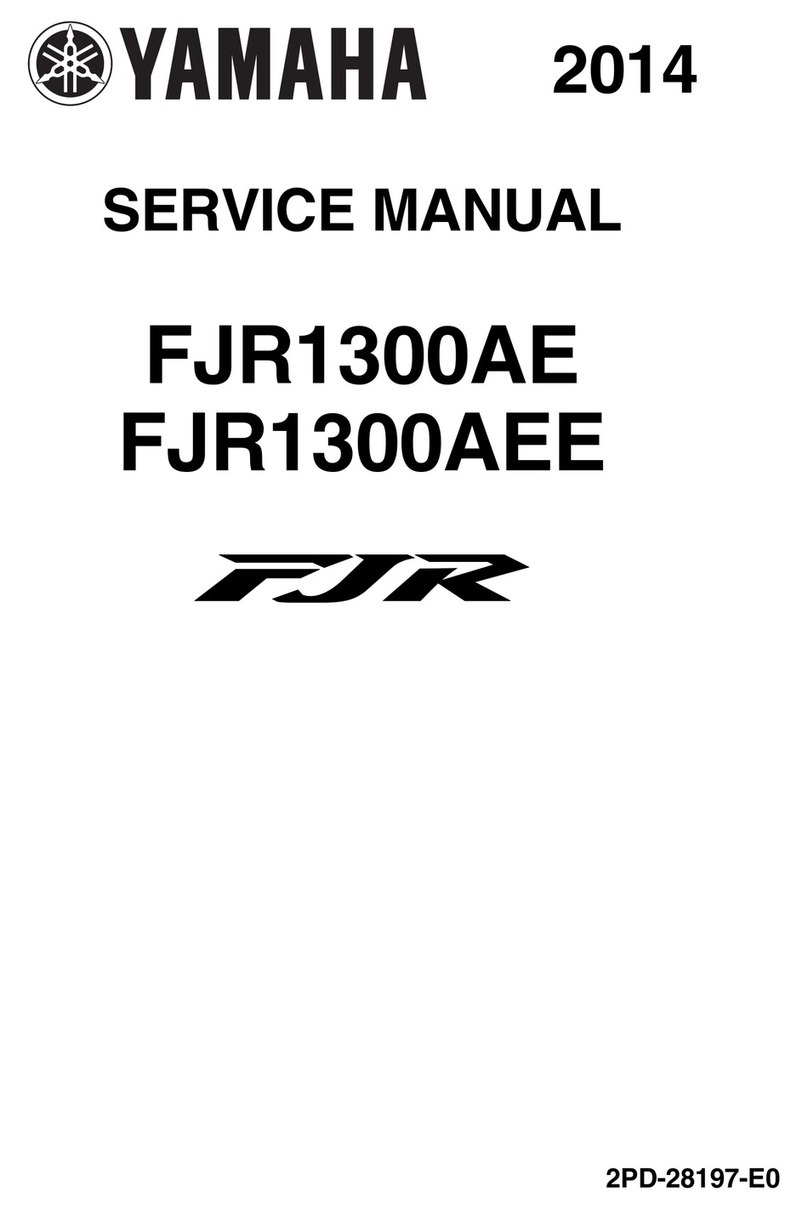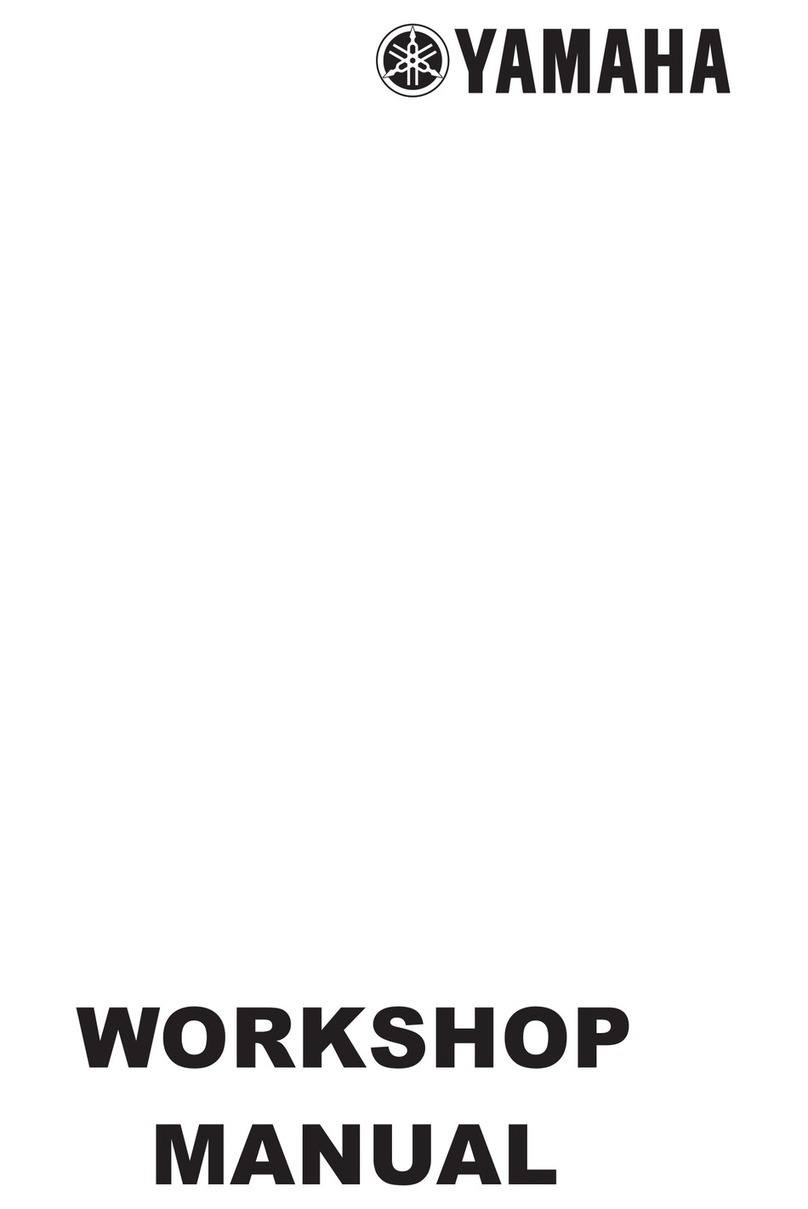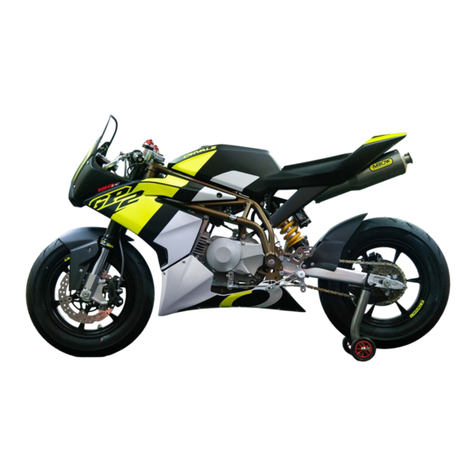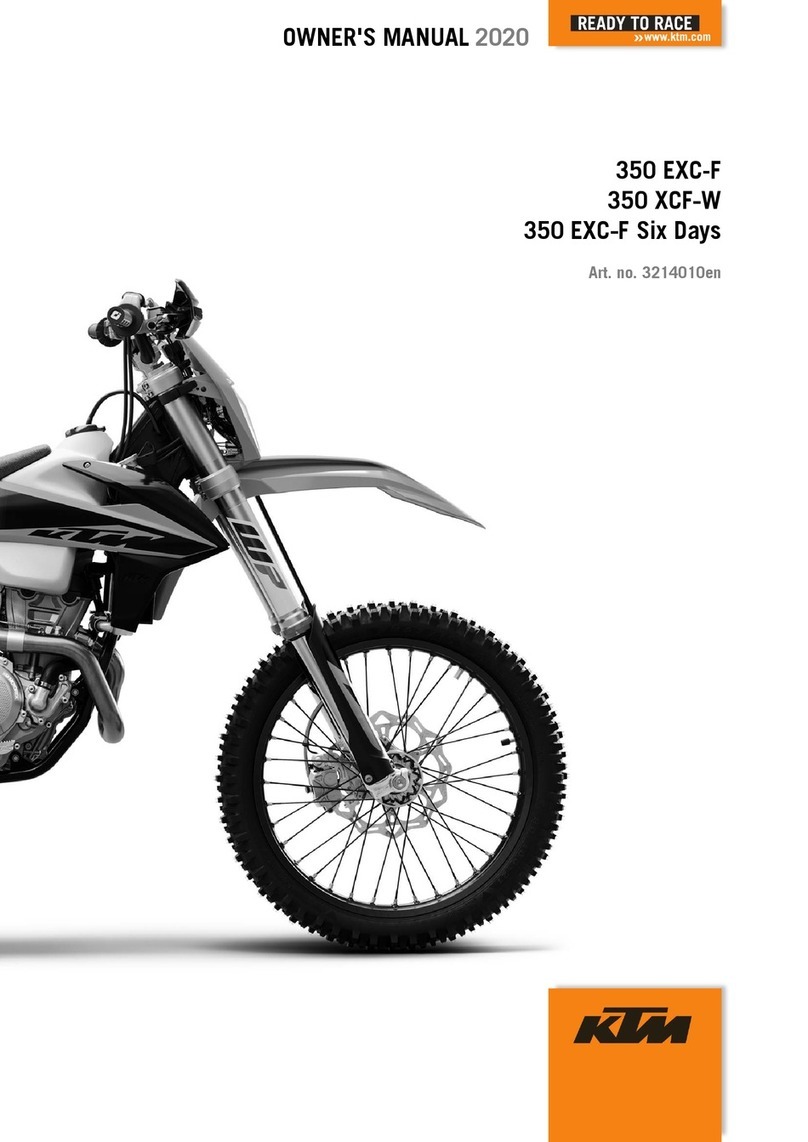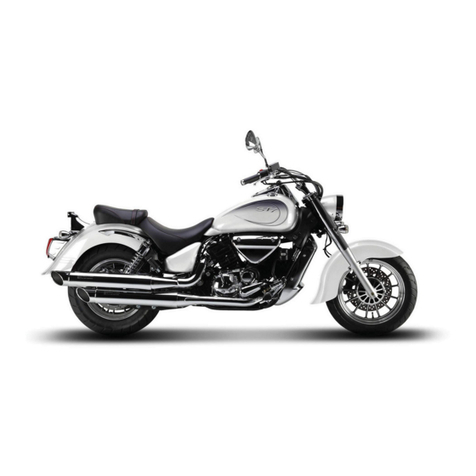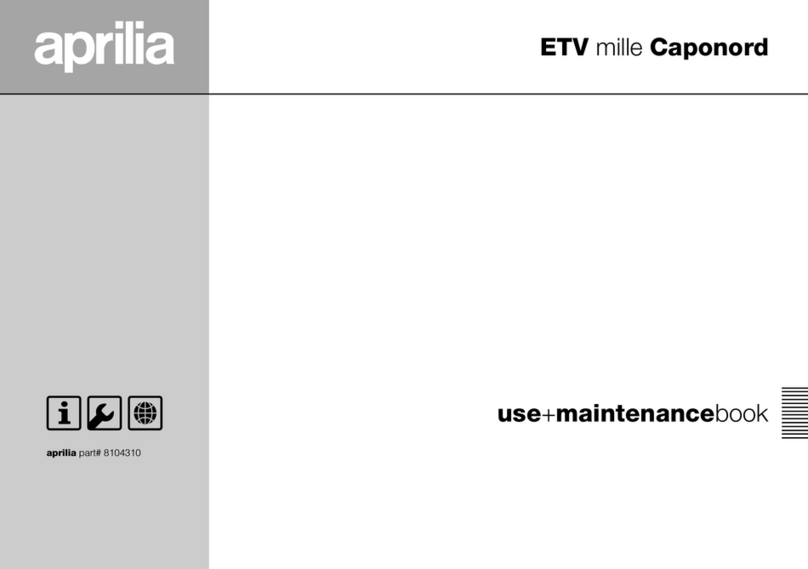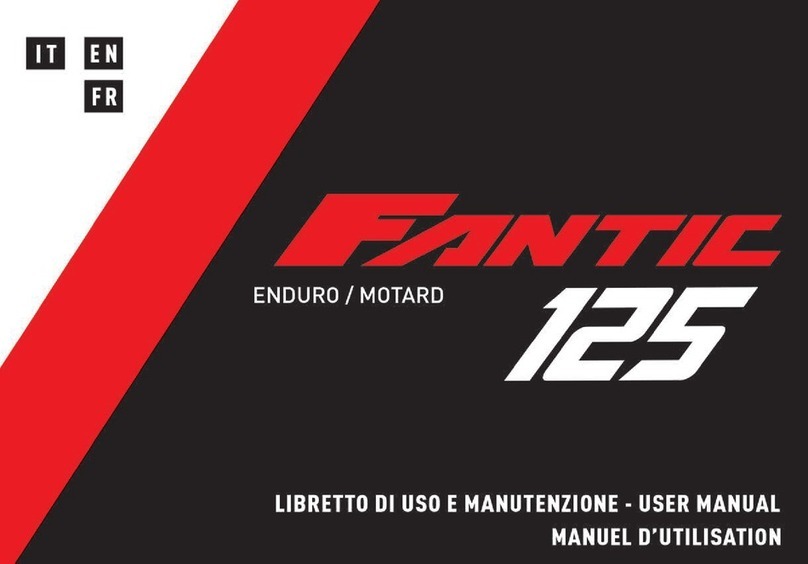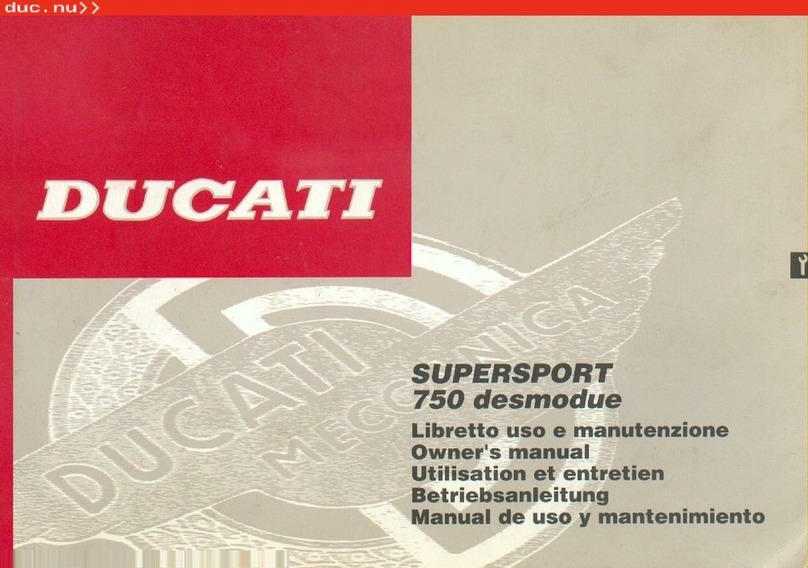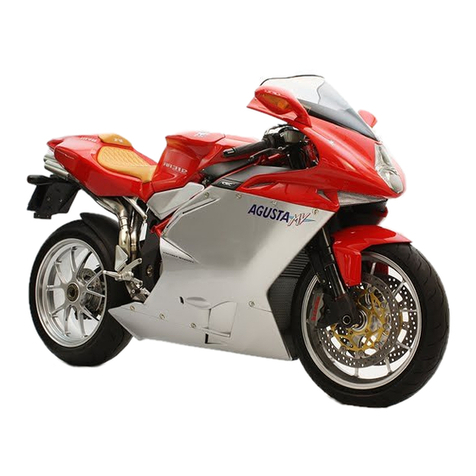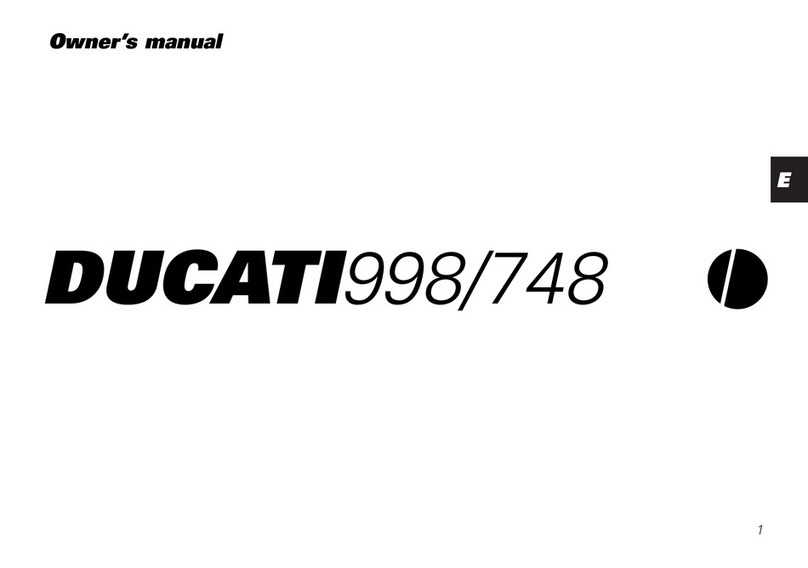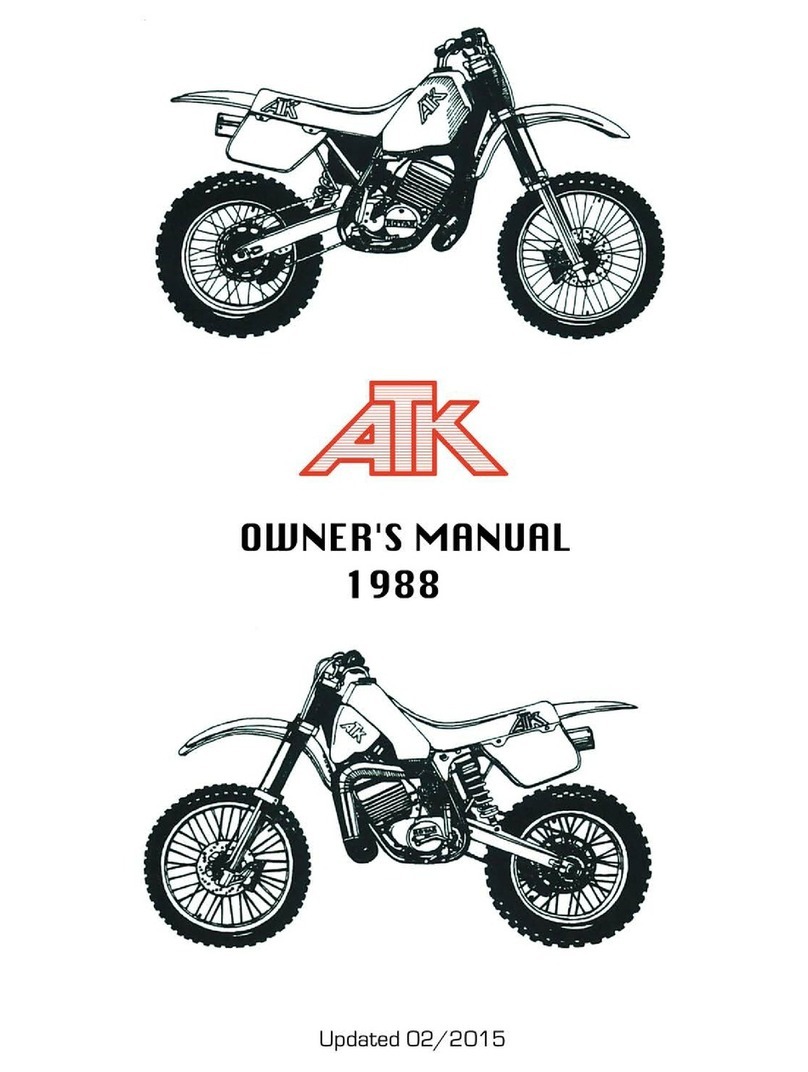4-3
ENG
CYLINDER HEAD, CYLINDER AND PISTON
CYLINDER HEAD, CYLINDER AND PISTON
Job name/Part name
Cylinder head, Cylinder and piston
removal
Engine
Muffler/Gasket
Air shroud 2
Spark plug
Cylinder head/Cylinder head gasket
Cylinder
Piston pin clip
Piston pin/ Bearing
Piston
Piston ring set
Cylinder gasket
Remarks
Remove the parts in the order.
Refer to the “ENGINE REMOVAL” sec-
tion
Reverse the removal procedure for in-
stallation.
Order
1
2
3
4
5
6
7
8
9
10
Q’ty
1/1
1
1
1/1
1
2
1/1
1
1
1
4
5
6
7
10 1
2
3
26Nm(2.6 m.kg, 18.2 ft.lb)
T
R
.
.
14Nm(1.4 m.kg, 10 ft.lb)
T
R
.
.
9Nm(0.9 m.kg,6.5 ft.lb)
T
R
.
.
New
New
New
E
8
9
CYLINDER HEAD, CYLINDER AND PISTON
4-4
ENG
PISTON PIN AND PISTON REMOVAL
1. Remove:
8Piston pin clip 1
NOTE:
Before removing the piston pin clip, cover the
crankcase with a clean rag so you will not acci-
dentally drop the clip into the crankcase.
2. Remove:
8Piston pin 1
8Piston 2
8Piston pin bearing 3
cC
Do not use a hammer to drive the piston pin
out.
CYLINDER HEAD INSPECTION
1. Eliminate:
8Carbon deposits
Use a rounded scrapper 1.
2. Inspect:
8Cylinder head warpage
Out of specification∅Re-surface.
*************************************
Warpage measurement and re-surfacement
steps:
8Attach a straight edge 1and a thickness
gauge 2on the cylinder head.
8Measure the warpage limit.
Warpage limit:
0.03 mm(0.0012 in)
8If the warpage is out of specification, reface
the cylinder head.
NOTE:
Rotate the head severai tires to avoid remov-
ing too much material from one side.
*************************************
CYLINDER HEAD, CYLINDER, PISTON
2
1
EAS00007
HOW TO USE THIS MANUAL
This manual is intended as a handy, easy-to-read reference book for the mechanic. Comprehensive
explanations of all installation, removal, disassembly, assembly, repair and check procedures are
laid out with the individual steps in sequential order.
1The manual is divided into chapters. An abbreviation and symbol in the upper right corner of
each page indicate the current chapter.
Refer to “SYMBOLS”.
2Each chapter is divided into sections. The current section title is shown at the top of each page,
except in Chapter 3 (“PERIODIC CHECKS AND ADJUSTMENTS”), where the sub-section
title(s) appears.
3Sub-section titles appear in smaller print than the section title.
4To help identify parts and clarify procedure steps, there are exploded diagrams at the start of
each removal and disassembly section.
5Numbers are given in the order of the jobs in the exploded diagram. A circled number indicates
a disassembly step.
6Symbols indicate parts to be lubricated or replaced.
Refer to “SYMBOLS”.
7A job instruction chart accompanies the exploded diagram, providing the order of jobs, names of
parts, notes in jobs, etc.
8Jobs requiring more information (such as special tools and technical data) are described se-
quentially.
8
4
5
7
1
3
26
